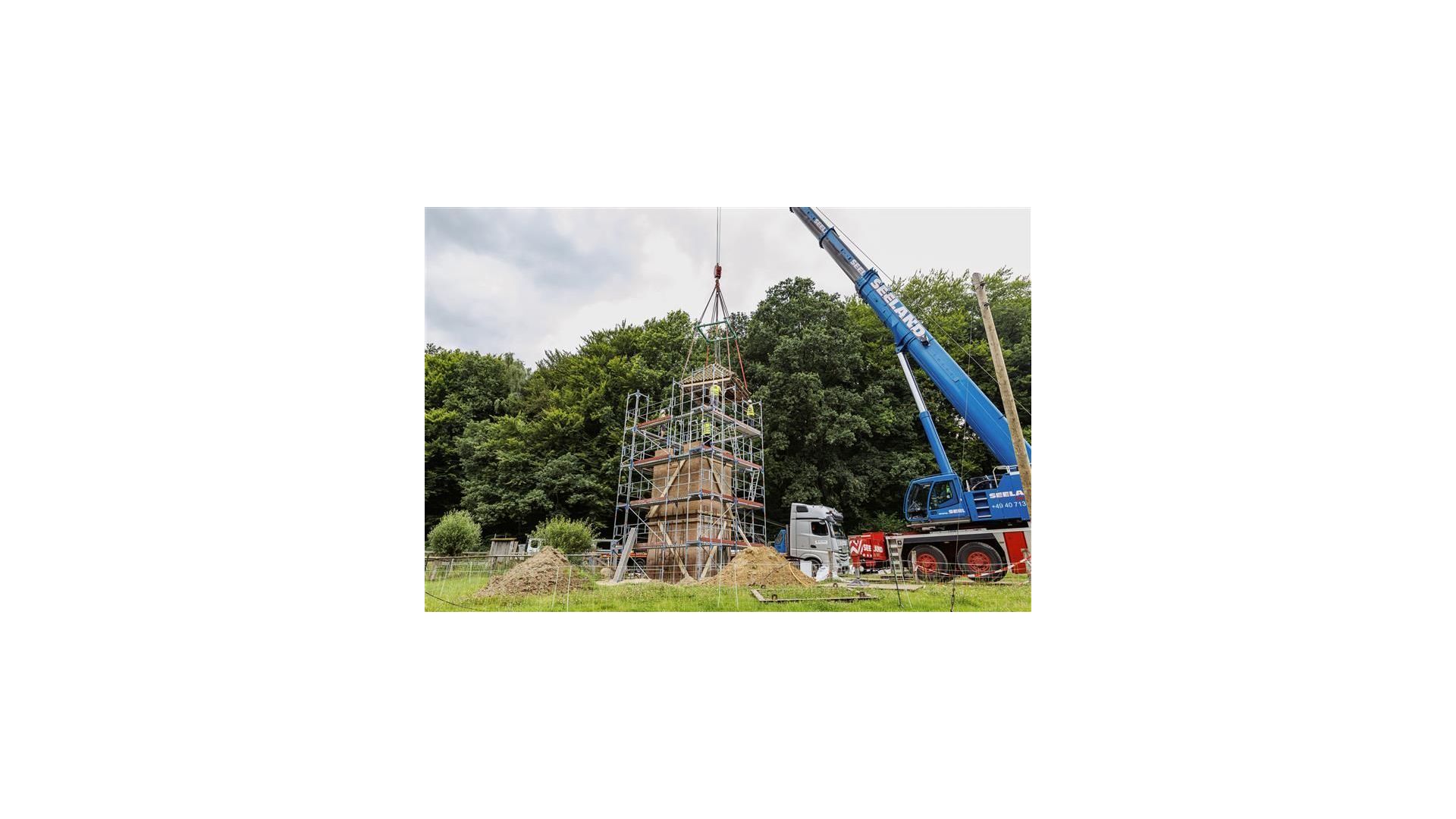When the Kiekeberg Open-Air Museum set out to preserve a historic transformer house, it wasn’t just a relocation, it was a delicate operation to safeguard a piece of industrial heritage. The structure, originally located in Winsen (Luhe), was carefully dismantled into three parts: entrance, stairwell, and roof. Each segment required precise handling to ensure its integrity remained intact throughout the journey.
The project was managed by Ehlert & Söhne, with Gustav Seeland and Max Wild handling the transport. The mobile crane was also provided by Gustav Seeland. Dismantling and reconstruction were carried out by JaKo, ensuring the station was carefully relocated and reassembled at its new site.
The challenge:
Moving heritage isn’t just about weight, it’s about care. Each component was heavy, irregularly shaped, and irreplaceable. The lift demanded even load distribution, gentle handling, and rapid execution within tight timeframes. There was no room for error.
The solution:
For this operation, LGH provided the appropriate lifting equipment: a modular spreader frame and round slings that are safe, flexible, and available at short notice.
- Modular spreader frame (34 t, 2 × 2 m) The modular spreader frame offered maximum flexibility thanks to its modular design: it could be precisely adapted to the lifting points of the transformer elements and thus enabled even load distribution with a compact design. The modular spreader frame is ideal for sensitive and irregularly shaped objects.
- 4 round slings 10 t, 2 m
- 8 round slings 5 t, 3 m The round slings allow for safe, gentle attachment and are easy to handle. A real advantage when dealing with sensitive or, as in this case, historically valuable objects.
The outcome:
The transformer station was successfully lifted, transported, and reassembled at its new home without compromise. This project showcases what’s possible when technical expertise meets cultural responsibility. Another reason to choose LGH for your lifting requirements.

